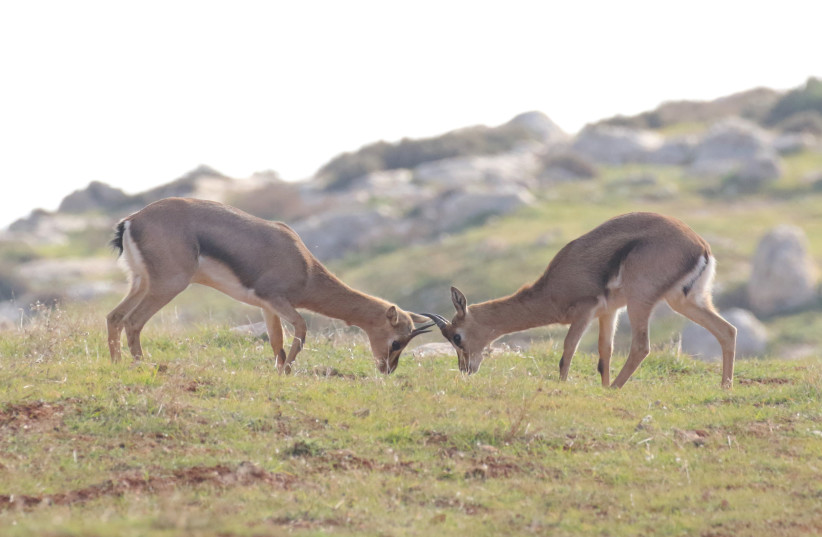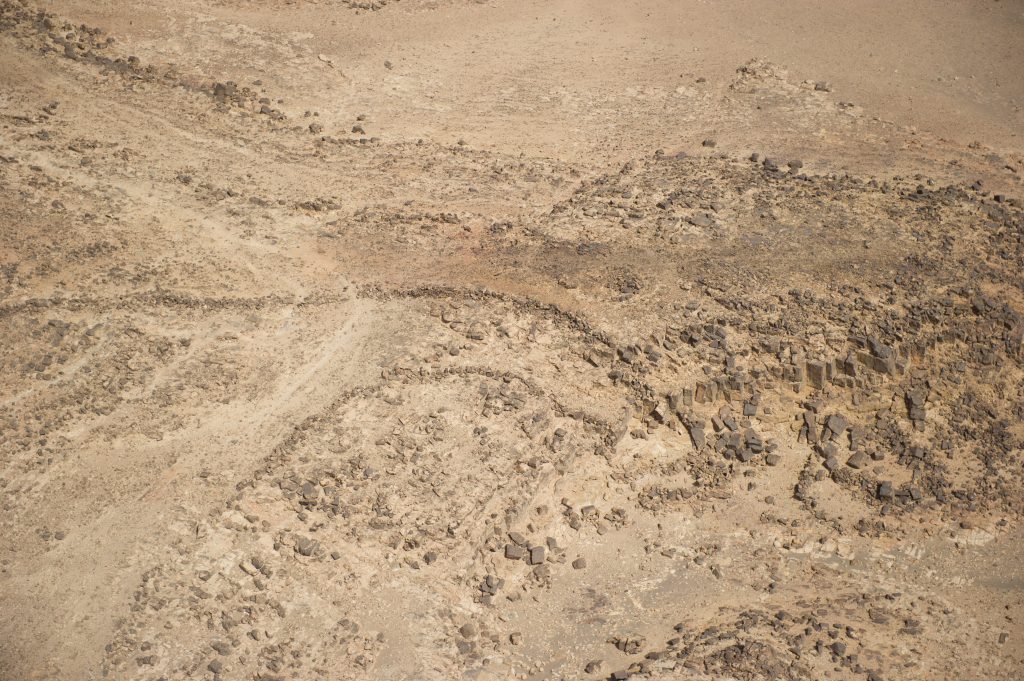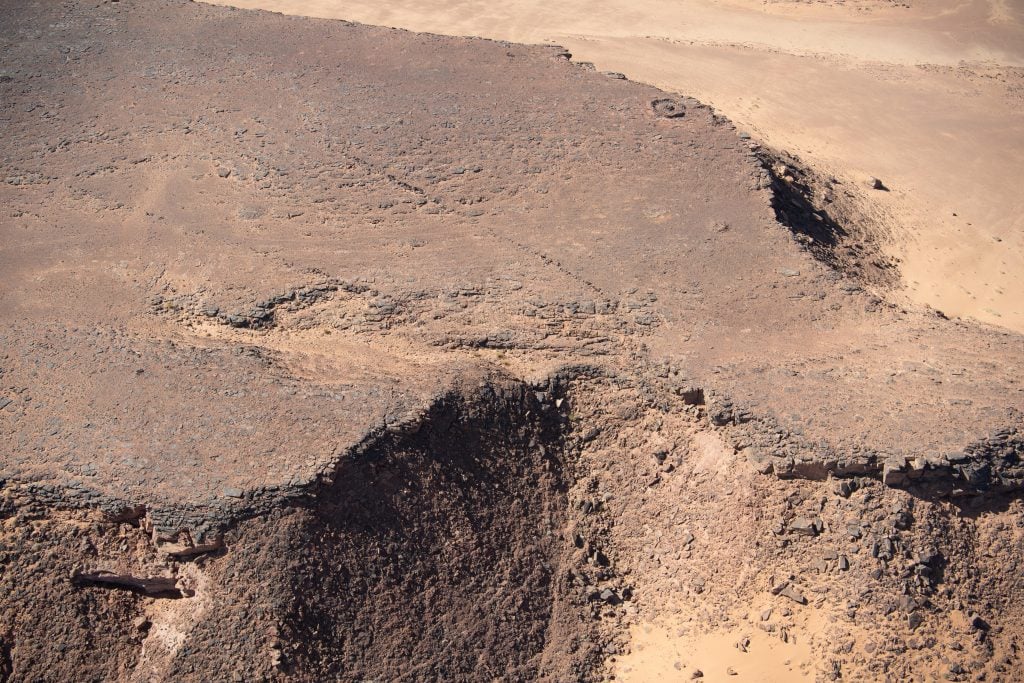After a century of research, archaeologists from the University of Haifa, the University of Western Australia, and France’s National Centre for Scientific Research have recently discovered that mysterious shapes in the desert resembling "kites" were actually meant to act as mega-traps to isolate large herds of animals before they met their fates.
Scattered throughout deserts across the Middle East, large structures that look like kites if you see them from above left behind by humans of the Neolithic era (10,000 BCE to between 4,500 and 2,000 BCE, depending on location) have led archaeologists to question their structural purposes for nearly a century.
Finally, experts were able to crack down on these extensive, strategically-planned structures to figure out just what their purpose was.
Coming in many shapes, with at least two long arms, low walls, and ending in a put, some of these structures appear like V's. Others look more circular, and a variety of other shapes throughout the region.
These subtle structures were built to act as mega-traps that allowed groups of people to trap and kill herds in their entirety, rather than one by one. In a series of new archaeological studies and academic papers, industry leaders have tirelessly worked to come to this conclusion and finally find an answer to this desert-based global archaeological phenomenon.

There are at least 6,500 of these archaeological marvels worldwide, with the Negev being home to some, as well as Saudi Arabia and even Australia. The earliest "kites" are recorded in Jordan dating back around 10,000 years, with others popping up across the globe as recently as 6,000 years ago.
Just because these structures were created in prehistoric times, it doesn't mean that their usage stopped there. Researchers have identified 12 prehistoric kites in Israel alone, according to profs. Dani Nadel and Guy Bar-Oz of the University of Haifa. The experts shared that the dating for these kites is unclear, but the last known use of mega-traps of this nature was as late as the 20th century.
Why do these kites exist?
These giant walled kites were not meant to help with the slaughtering of animals that have been domesticated through the centuries - pigs, cows, goats, and so on, but were meant to help hunters trap and kill animal breeds that were not able to be domesticated.
Antelopes, deer, gazelles and other species would find themselves plummeting to their deaths en-masse as part of a scheme to make wild animals that were otherwise difficult to tame more susceptible to mega hunting efforts.
https://www.jpost.com/archaeology/article-724495
In the 1920s, British Royal Air Force pilots over the Middle East recorded the first sightings of what they dubbed desert kites—massive patterns carved into rocky land, often resembling the famous flying toy.
Archaeologists have since debated the purpose of these enigmas, which appear across geographies and eras, dating back to the Neolithic Period (10,000–2,200 B.C.E.) in Jordan, the early Bronze Age (3,300–2,100 B.C.E.) in Israel’s Negev Desert, and the Middle Bronze Age (2,100–1,550 B.C.E.) in Armenia. Some thought they were cultural cornerstones. Still more posited they were pens for domesticating animals.
Three recent peer-reviewed papers confirm popular hypotheses that the desert kites actually served as mass hunting traps, allowing early desert dwellers to kill entire herds of game at once. While they were active, the kites funneled gazelle and ibex down tapered, wall-lined paths which ended in massive pits or sudden cliffs where creatures were trapped and killed. The kites’s particular placement, length, and shape generally demonstrate a sophisticated knowledge of landscapes and animal behaviors.

Aerial view of a V-shaped kite on the eroded eastern edge of the Harrat’Uwayrid. Photo: Don Boyer / RCU / AAKSAU
In 2014, the Jerusalem Post reported there were over 4,000 known desert kites, mostly spotted through Google Earth. At that point, only 30 kites had ever been excavated and one percent surveyed. Around 6,500 are known today. Professors Dani Nadel and Guy Bar-Oz from the University of Haifa told Haaretz that such kites were in use until the last century.
In March 2022, the Journal of World Prehistory published “The Use of Desert Kites as Hunting Mega‑Traps.” Led by Rémy Crassard, the study’s functional evidence verifies the kites were used as hunting traps, examining their social and ecological impact. “New Arabian desert kites and potential proto-kites” appeared in the Journal of Archaeological Science in April, led by Olivier Barge, documenting early ‘open kites’ found during the last two years in Saudi Arabia’s northwestern Khaybar region. Rebecca Repper led August’s “Kites of AlUla County and the Ḥarrat’Uwayriḍ” on remote sensing research into some 200 other northwestern Arabian kites.

Ancient kite in a sandstone landscape in AlUla County, with walls that extend about 300 meters across a mesa leading to a sudden precipice over which hunters drove prey. Photo: David Kennedy / RCU / AAKSAU
This year’s spate of publications, Repper said, “reflect a wider interest and focus on these structures since the increased availability of satellite imagery.” The Royal Commission for AlUla has funded the Aerial Archaeology in the Kingdom of Saudi Arabia Project, which Repper is a part of, since 2018.
Experts behind each paper communicated during their respective studies. Repper’s was just one project the Saudi government is funding, alongside the Khaybar Longue Durée Project, co-directed by Crassard “and part of a wider program to sustainably develop this culturally rich and ancient region.” Crassard and Barge are both on the Global Kites Project, Repper added, which has “fundamentally advanced” the kite conversation.
Archaeologists hope to continue accurately dating each kite to track how hunters developed the technique over time and responded to shifting animal migration and population patterns, which mass hunting itself affected. They also plan to excavate agricultural and domestic structures from comparable timeframes to identify which animals were hunted, and why.
“This will allow us to build an understanding of how hunting fit into the culture of these ancient populations, and what these people valued,” Repper noted.
https://news.artnet.com/art-world/scientists-have-cracked-the-origins-of-desert-kites-massive-prehistoric-patterns-that-were-carved-into-the-middle-eastern-desert-2225003
No comments:
Post a Comment
Stick to the subject, NO religion, or Party politics